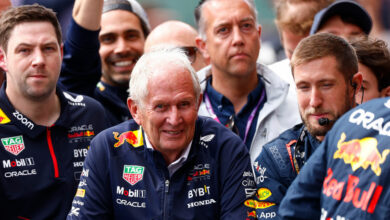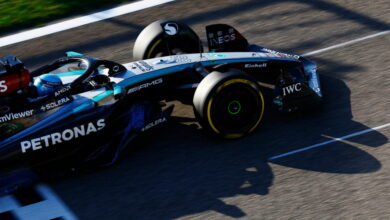Sauber’s 2024 F1 Challenge: Overcoming the Reverse Engineering of C44’s New Suspension
In a bold move for the 2024 Formula 1 season, the Sauber team has revolutionized its car design with a pull-rod front suspension, a shift from its traditional car philosophy. This strategic change, aimed at aerodynamic benefits, has introduced a unique set of challenges, with the suspension functioning in an unconventional ‘reverse’ manner.
Key Takeaways:
- Sauber’s 2024 season is marked by the introduction of a pull-rod front suspension on the C44 for aerodynamic improvements. The team, however, grapples with initial setup issues.
- Inspired by Red Bull’s RB19, the redesigned C44 has not fully capitalized on its potential, resulting in no points scored in the early races and a noticeable lack of pace.
- Pit-stop complications have further troubled the team, with Valtteri Bottas and Zhou Guanyu encountering delays in Bahrain and Saudi Arabia, respectively. Additionally, Audi’s complete acquisition of Sauber highlights a significant off-track development in the Formula 1 arena.

The Sauber F1 team’s endeavor to revamp its car design with a pull-rod front suspension has emerged as a formidable challenge in the 2024 season. While drawing inspiration from Red Bull’s successful RB19, Sauber’s C44 still lags in fully harnessing the aerodynamic benefits of its new design. This is evident from the team’s performance in the first two races, where they failed to score any points, contrasting sharply with their previous season’s early successes.
Sauber’s deputy team principal, Alessandro Alunni Bravi, expressed his disappointment with the team’s performance in Saudi Arabia, highlighting their P11 and P19 finishes. This underscored the significant gap between the team’s aspirations and their current results.
Despite the sleek aesthetic overhaul of the C44, featuring a black and green livery, the team’s performance on track hasn’t matched their visual makeover. Bahrain and Jeddah races laid bare the car’s lack of pace and the difficulty in mastering the new suspension setup.
Pit-stop woes added to the team’s challenges. Valtteri Bottas lost crucial time due to a cross-threading issue in Bahrain, while Zhou Guanyu faced a similar delay in Saudi Arabia. These incidents not only cost the team valuable seconds but also highlighted the teething problems in managing the new car’s technical complexities.
Amid these on-track struggles, Sauber experienced a major off-track development. Audi, previously speculated to be reducing its Formula 1 involvement, has now taken full ownership of the team. This acquisition marks a significant shift in the team’s strategy and future direction in the sport.
James Key, the technical director of Sauber, discussed the intricacies of the pull-rod suspension setup. He explained, “The challenge of this design is to achieve a stiff assembly that performs its damping and spring work as well as a push-rod suspension. Everything works in reverse with a pull-rod suspension.” His insights shed light on the technical hurdles the team faces in adapting to this new design.
In conclusion, Sauber’s 2024 F1 campaign presents a mix of ambitious engineering and strategic challenges. While the team grapples with the complexities of their new car design, the recent developments, including Audi’s complete acquisition, hint at a potentially transformative future for the team in the Formula 1 landscape.



